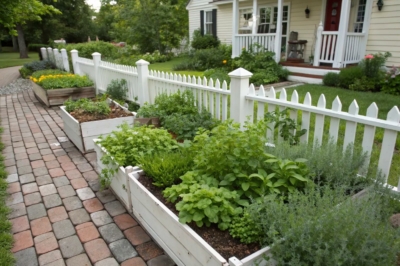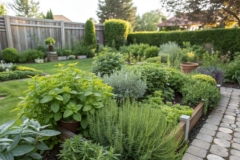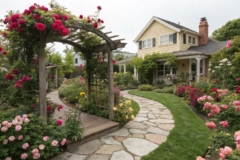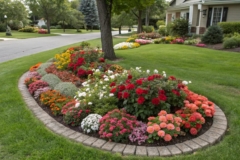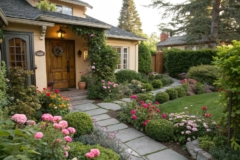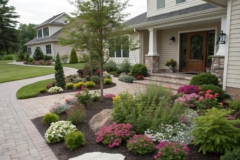1. Raised Bed Elegance
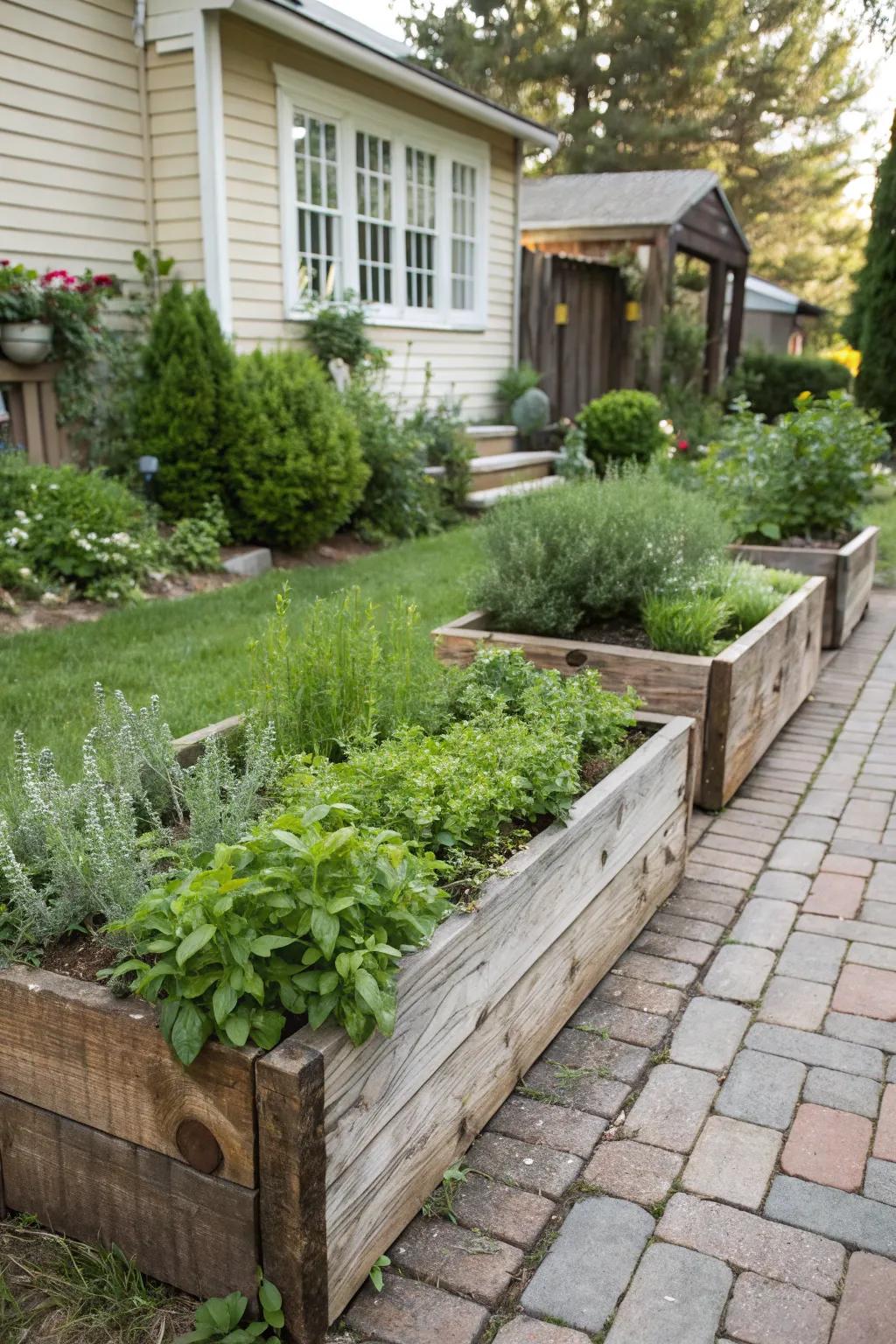
Let’s kick things off with raised beds, perfect for showing off your herbs in a neat, organized way. I’ve found they keep everything tidy and make it so much easier to manage my herbs, especially in areas with less-than-ideal soil.
Possibly helpful picks:
- Wooden Raised Garden Bed Kit: Elevate your herbs with a sturdy wooden raised bed kit for organized, beautiful gardening.
- Organic Herb Seeds Variety Pack: Start your herb garden with an organic seed variety pack tailored for fresh, flavorful growth.
- Soil Mix for Raised Beds: Ensure optimal growth with high-quality soil mix designed specifically for raised bed gardening.
2. Herb Diversity Delight
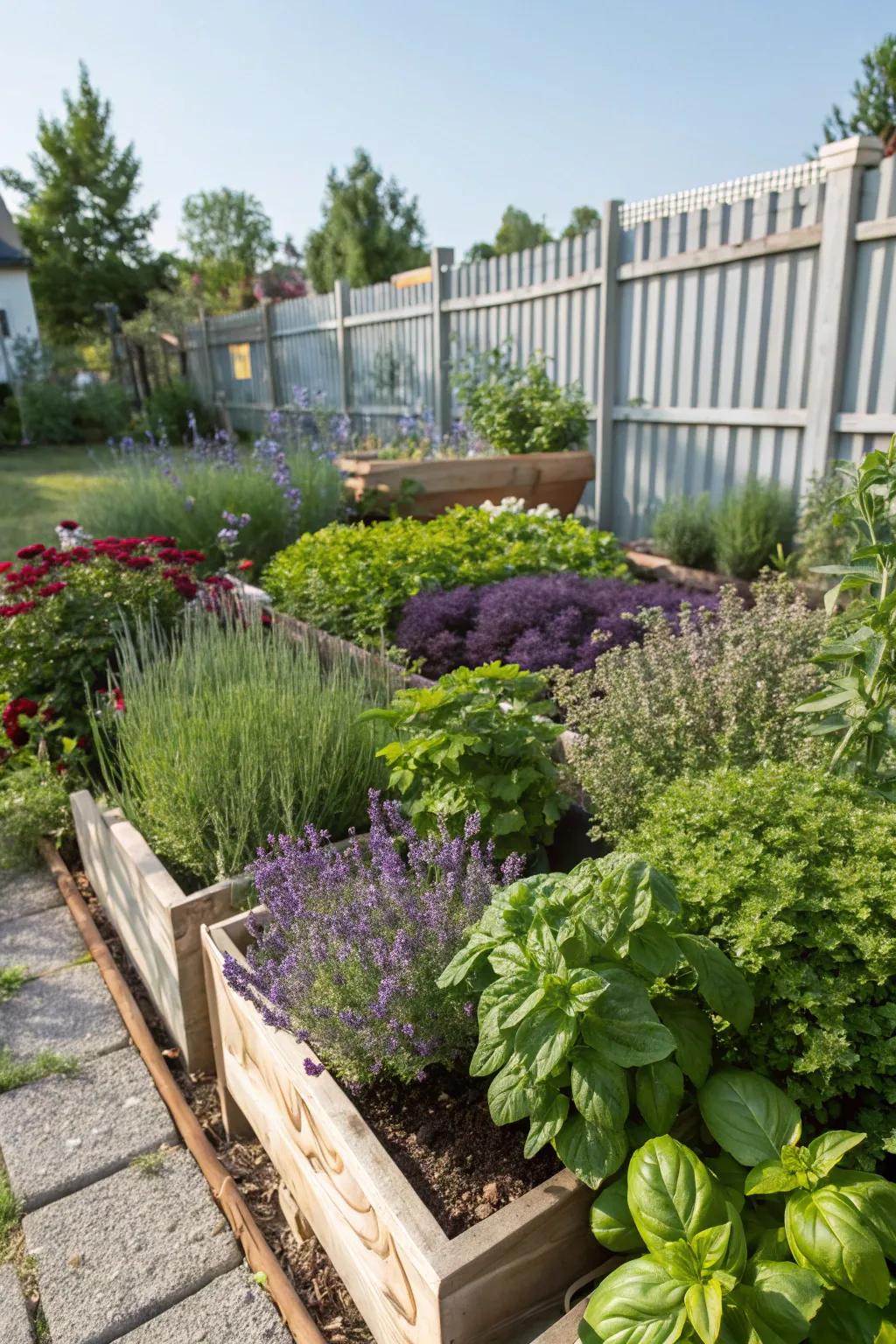
Mix it up with a variety of herbs like lavender, basil, and parsley to create a visually captivating garden. I always enjoy the burst of colors and scents that come with a diverse herb collection.
A few suggestions:
- Raised Garden Bed Kit: Elevate your herb gardening with a sturdy raised bed for easy access and better growth.
- Organic Herb Seeds Variety Pack: Start your diverse herb garden with this organic seed pack offering a mix of popular herbs.
- Compact Watering Can with Long Spout: Ensure every plant gets the water it needs with this easy-pour, long-spout watering can.
3. Symmetrical Herb Displays
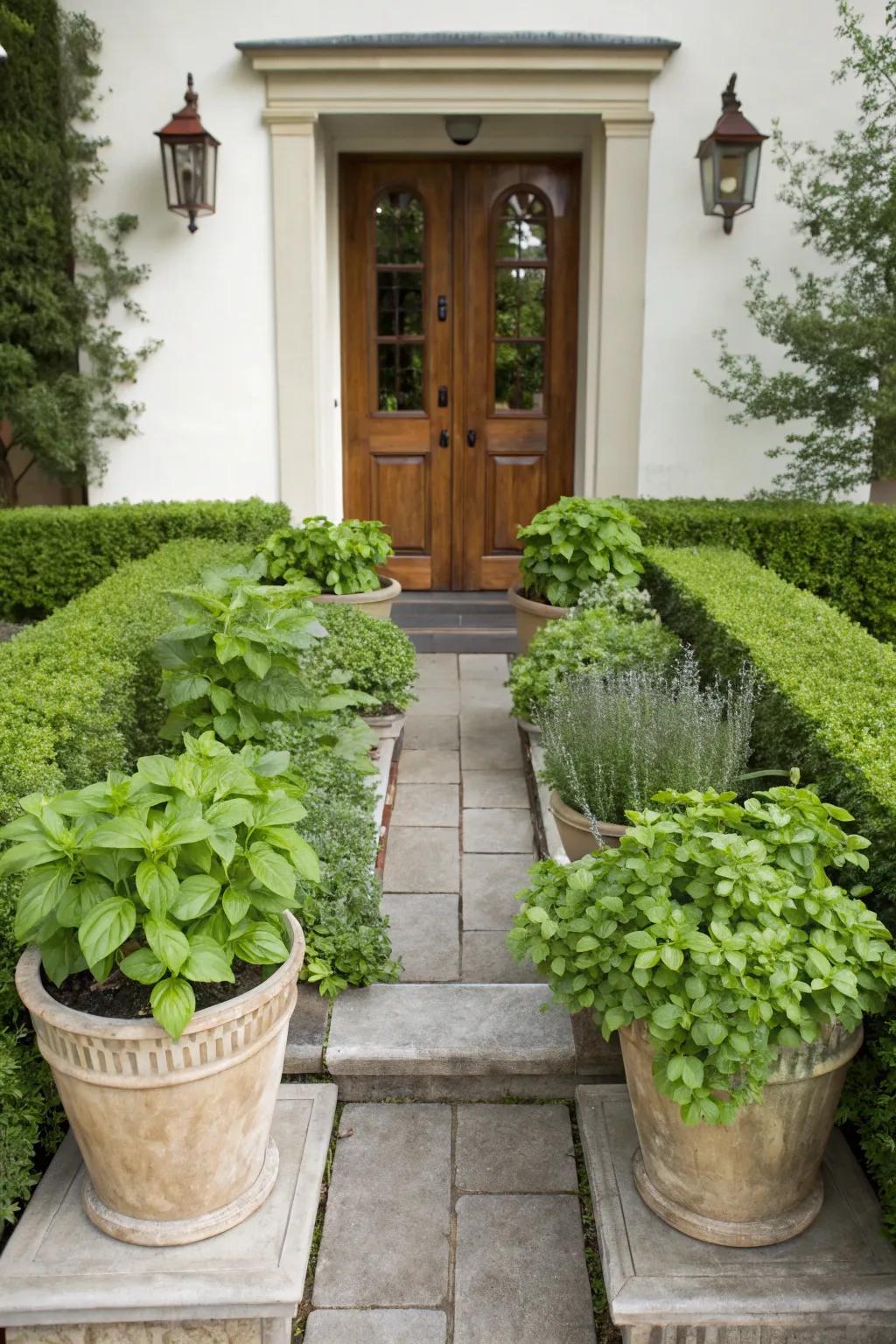
For a polished look, try symmetrical displays with matching herb varieties on either side of an entrance. It’s a simple trick that makes my garden feel sophisticated and balanced.
Check if these fit your needs:
- Outdoor Garden Planters: Enhance your entrance with elegant planters, perfectly suited for symmetrical herb arrangements.
- Herb Starter Kit: Start your garden with this kit, ideal for growing matching herbs on either side.
- Paving Stone Kits: Create a charming walkway with durable paving stones, adding structure to your herb garden layout.
4. Geometric Garden Designs
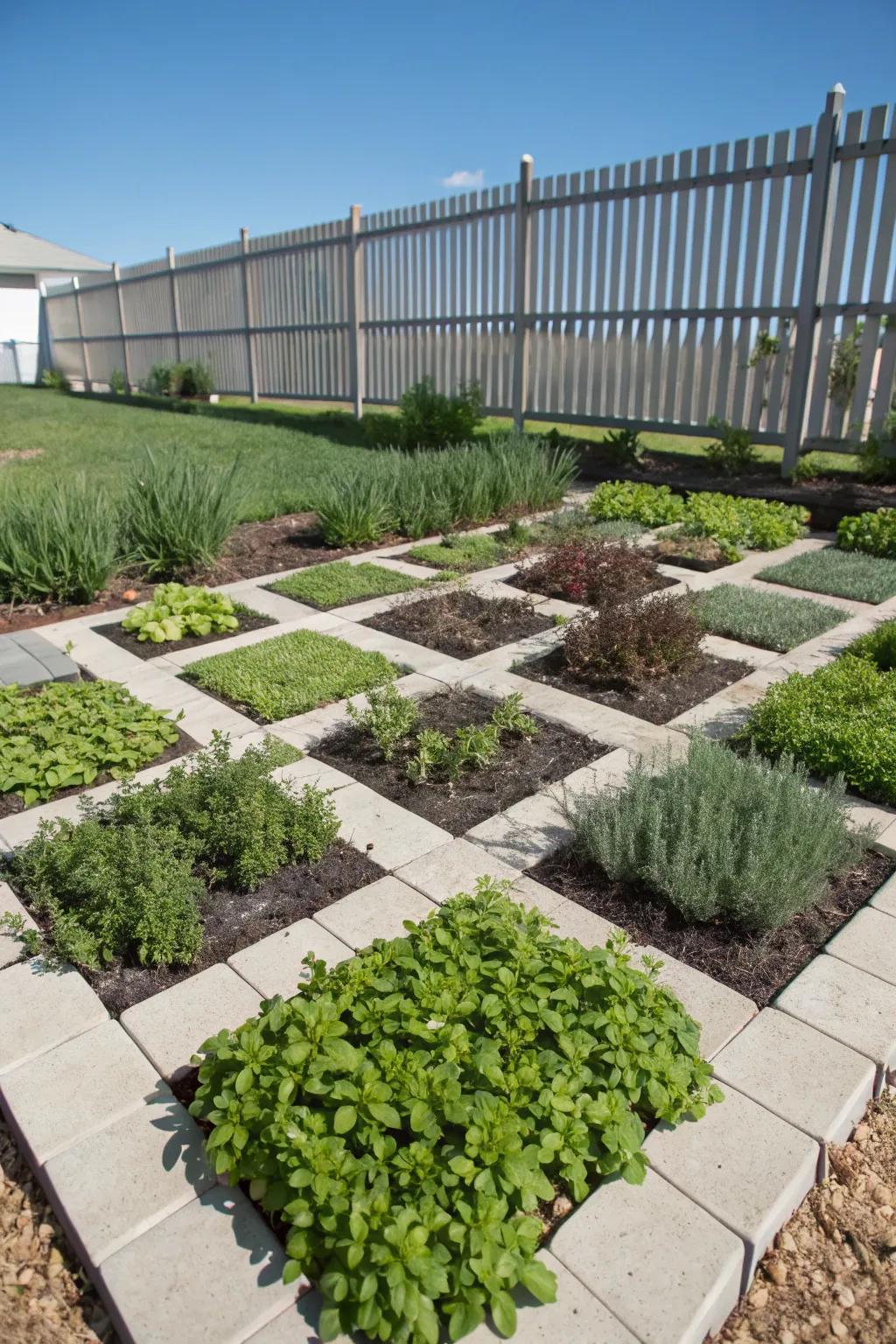
For a modern twist, try geometric designs like a checkerboard pattern with herbs. I experimented with this in my own garden, and it turned out to be a real conversation starter!
Some ideas to consider:
- Garden Paver Stones: Enhance your garden’s structure with durable paver stones. Create stunning geometric designs today!
- Herb Planting Kit: Start your geometric herb garden with a beginner-friendly planting kit. Discover your green thumb now!
- Garden Soil Mix: Provide your herbs with rich, nourishing soil for healthy growth and vibrant colors. Shop now!
5. Herb Spirals for Drama
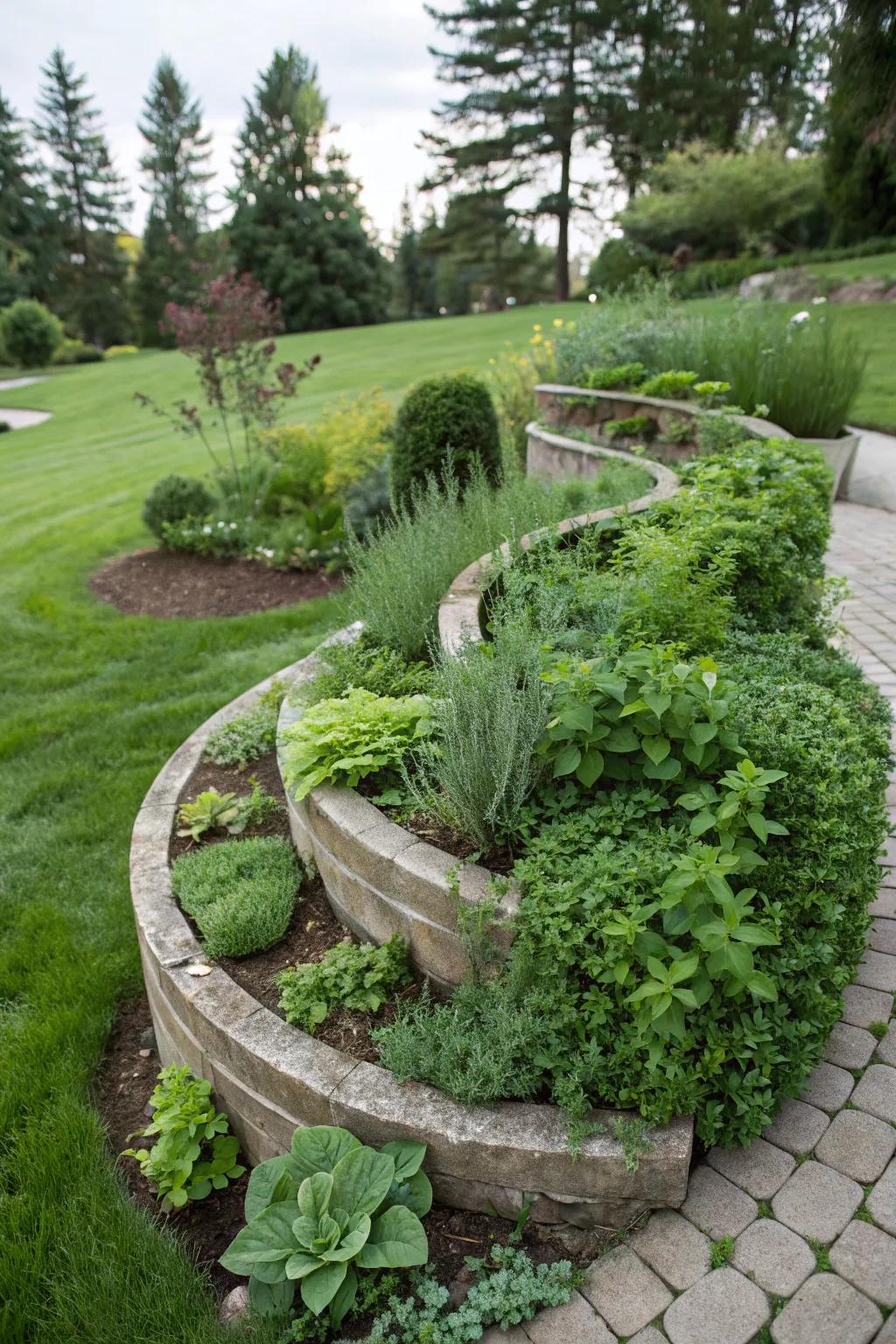
Add a bit of height and drama with a herb spiral. This technique not only looks stunning but also offers different microclimates for a variety of herbs.
A few choices to try:
- Stackable Stone Planter Blocks: Create a stunning herb spiral with easy-to-stack stone blocks for added height and drama.
- Organic Herb Seed Pack: Start your herb spiral garden with a variety pack of organic herb seeds for diverse planting.
- Adjustable Garden Hose Nozzle: Maintain your herb spiral efficiently with an adjustable nozzle for precise watering needs.
6. Herb Wheels for Fun
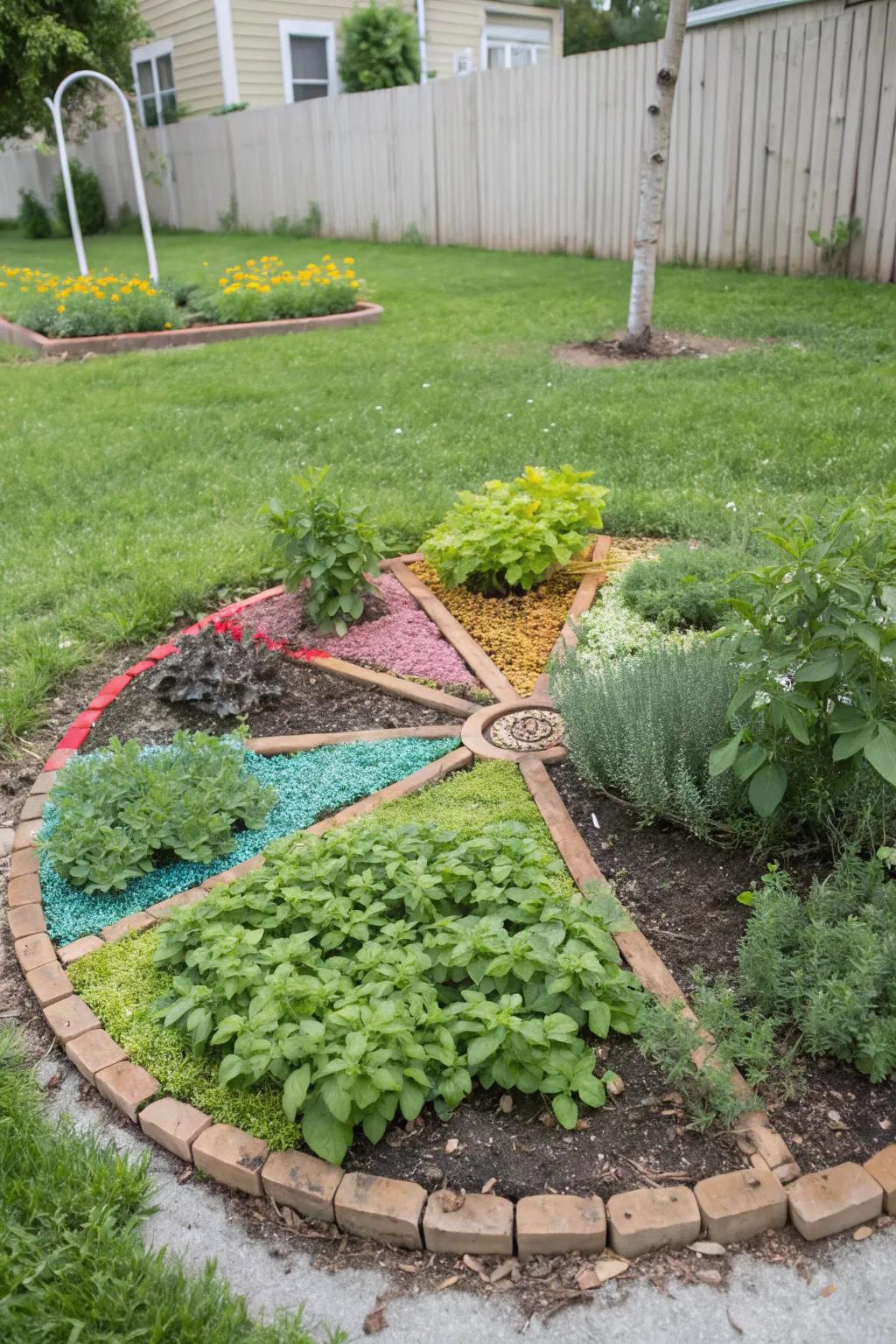
Craft a herb wheel for a playful yet organized garden. Each section can host a different herb, making it easy to pick just what you need while keeping things lively.
Explore these options:
- Circular Garden Bed Edging: Define your herb wheel neatly with this durable edging, keeping plants organized and accessible.
- Assorted Herb Seed Kit: Start your herb garden with a variety of seeds, ready to plant and enjoy fresh flavors.
- Soil Moisture Meter: Ensure perfect watering by using this moisture meter, preventing over or under-watering your herbs.
7. Natural Element Accents
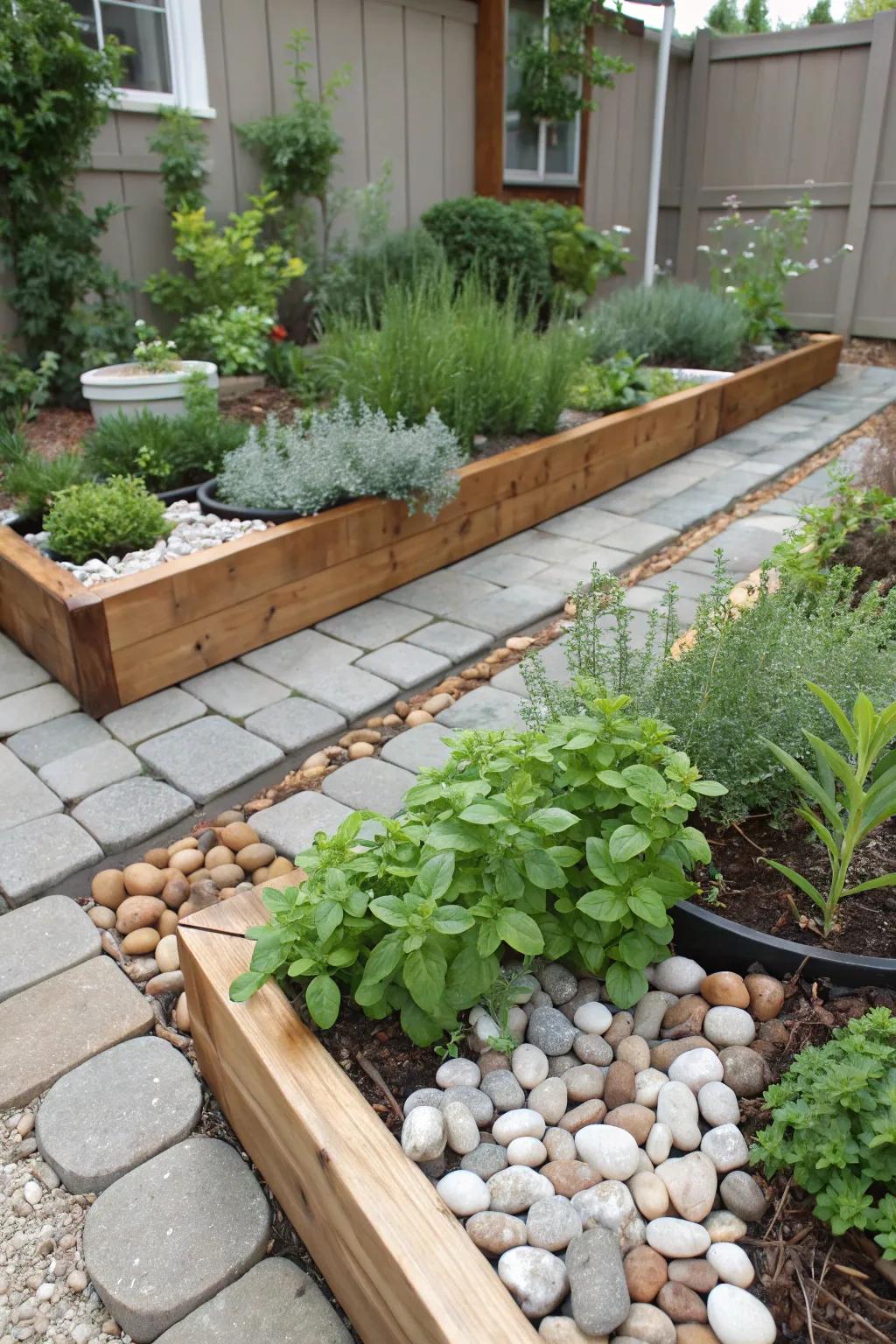
Incorporate natural elements like stones or wood to enhance the garden’s beauty. I often use these materials to create subtle borders or decorative features.
You might like:
- River Rocks for Landscaping: Add charm to your garden using smooth river rocks for natural pathways and borders.
- Wooden Garden Edging: Enhance your garden beds with wooden edging for a rustic and natural appearance.
- Decorative Stone Pebbles: Use decorative stone pebbles for adding texture and interest to your herb garden design.
8. Seasonal Variety
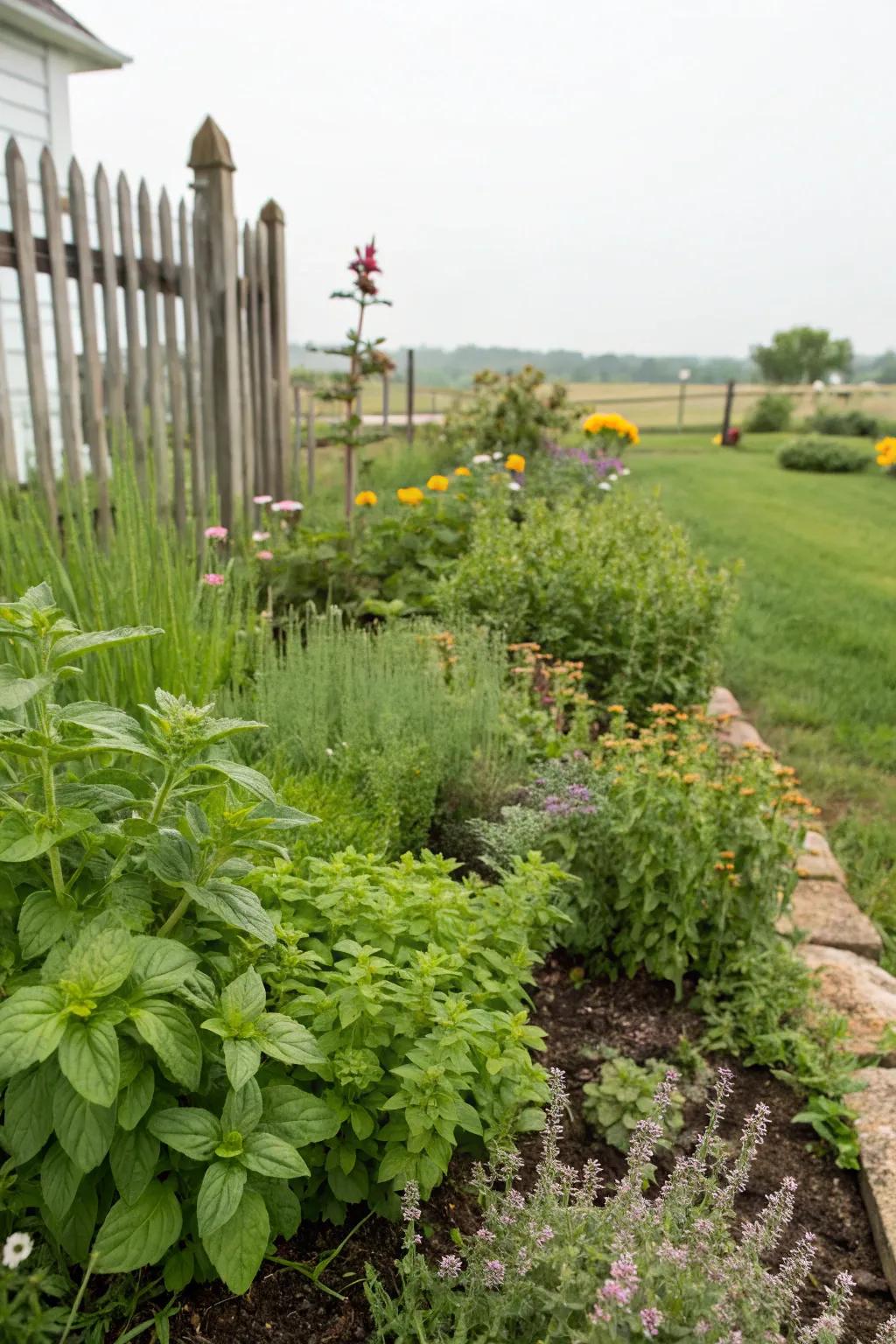
Choose herbs that provide seasonal variety for year-round charm. I love seeing how my garden changes with each season, keeping things fresh and exciting.
You might give these a try:
- Assorted Herb Seed Packets: Enhance your garden’s charm year-round with diverse seasonal herbs. Plant and enjoy fresh flavors.
- Stackable Garden Planters: Maximize your space and diversify your garden with stackable planters for seasonal herbs.
- Outdoor Herb Garden Markers: Keep track of your seasonal herbs with stylish garden markers. Organize and identify with ease.
9. Vertical Herb Gardens

Go vertical with your herbs to save space and add visual interest. Wall-mounted planters or trellises covered in herbs are my go-to for an eye-catching display.
Consider these options:
- Wall-Mounted Planter Kit: Transform your space with a sleek wall-mounted planter for lush, healthy herbs anytime.
- Hanging Garden Trellis: Elevate your herb gardening with a space-saving trellis perfect for vibrant vertical displays.
- Space-Saving Herb Planter Shelf: Maximize space and style with a durable planter shelf, ideal for thriving herbs.
10. Knot Gardens for Elegance
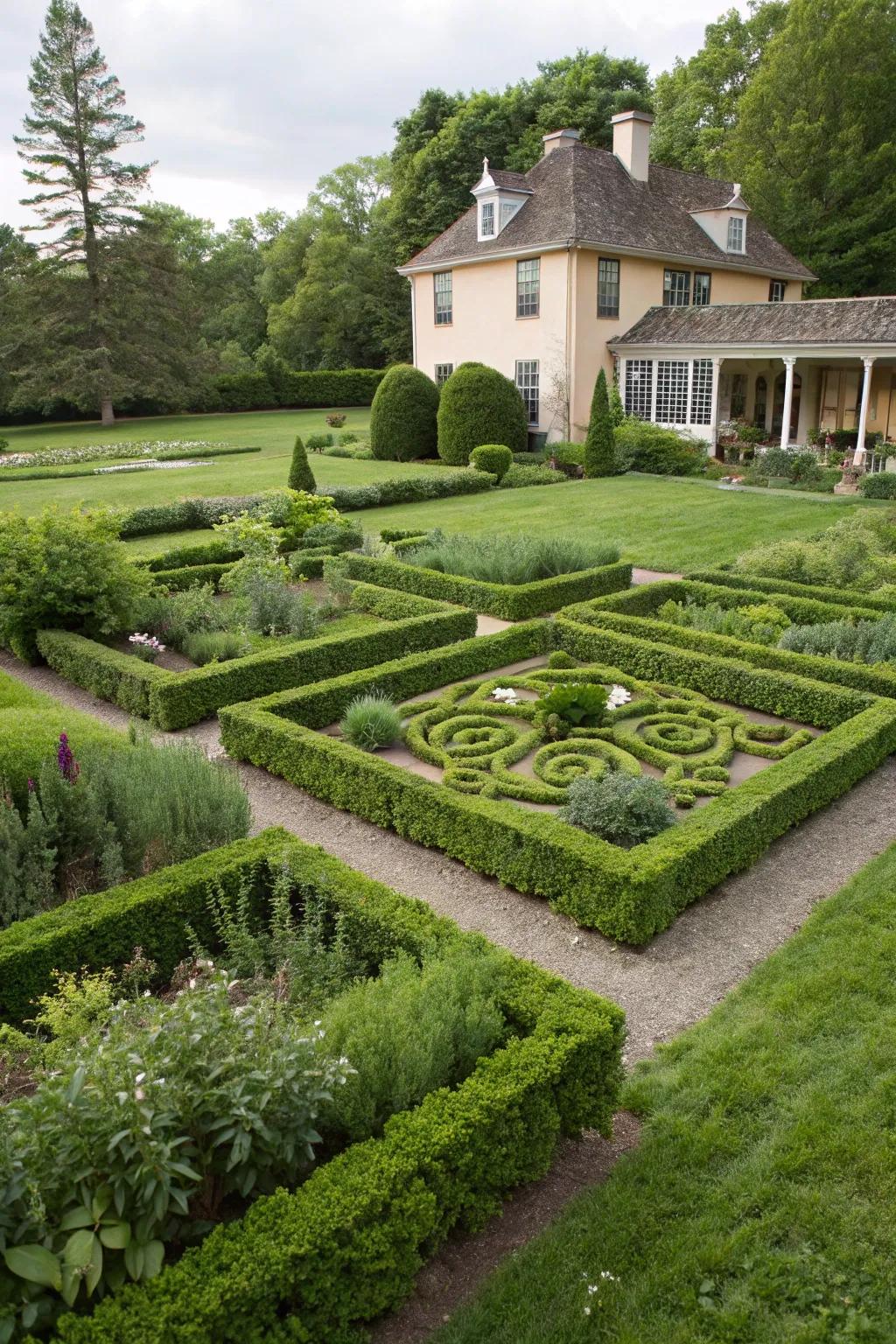
For those with a penchant for the classic, knot gardens bring elegance and structure to the front yard. I tried a small one, and it’s become a stunning focal point!
Maybe worth checking out:
- Herb Garden Seed Kit: Grow a variety of herbs to enhance your knot garden’s aroma and culinary use.
- Garden Edging Tools: Create clean lines and define your knot garden layout with ease and precision.
- Decorative Plant Markers: Organize your herbs stylishly with markers that blend seamlessly into the garden design.
11. Compact Herb Arrangements
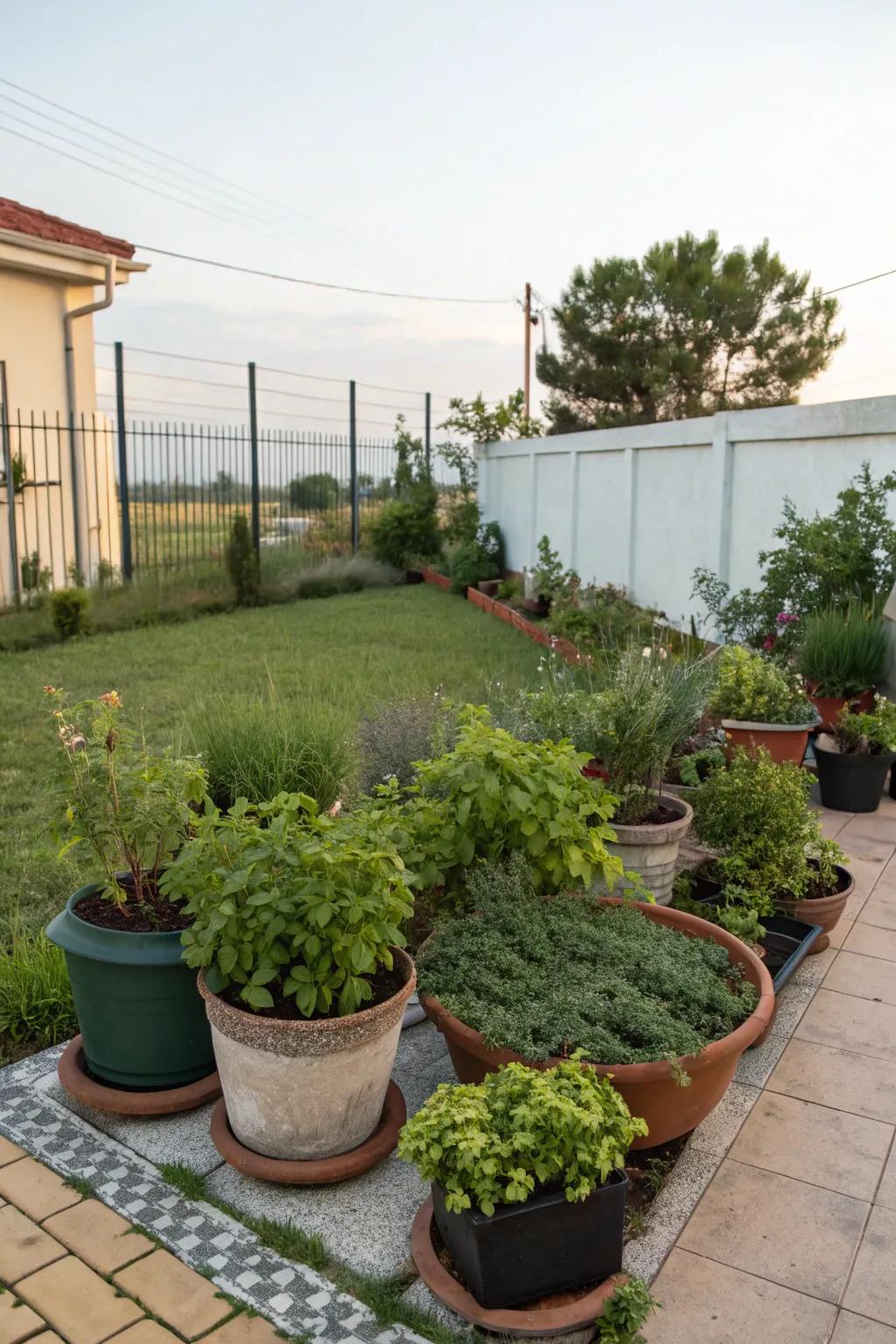
If space is tight, go for compact arrangements with potted herbs. I’ve found that grouping pots together creates a lush, layered effect without needing much room.
Some handy options:
- Stackable Planter Set: Maximize your space with a stackable planter set, perfect for compact herb arrangements.
- Self-Watering Pots: Simplify your gardening with self-watering pots that ensure optimal herb growth with minimal effort.
- Herb Seeds Variety Pack: Grow a diverse herb garden from scratch with a convenient herb seeds variety pack.
12. Cozy Seating Corners
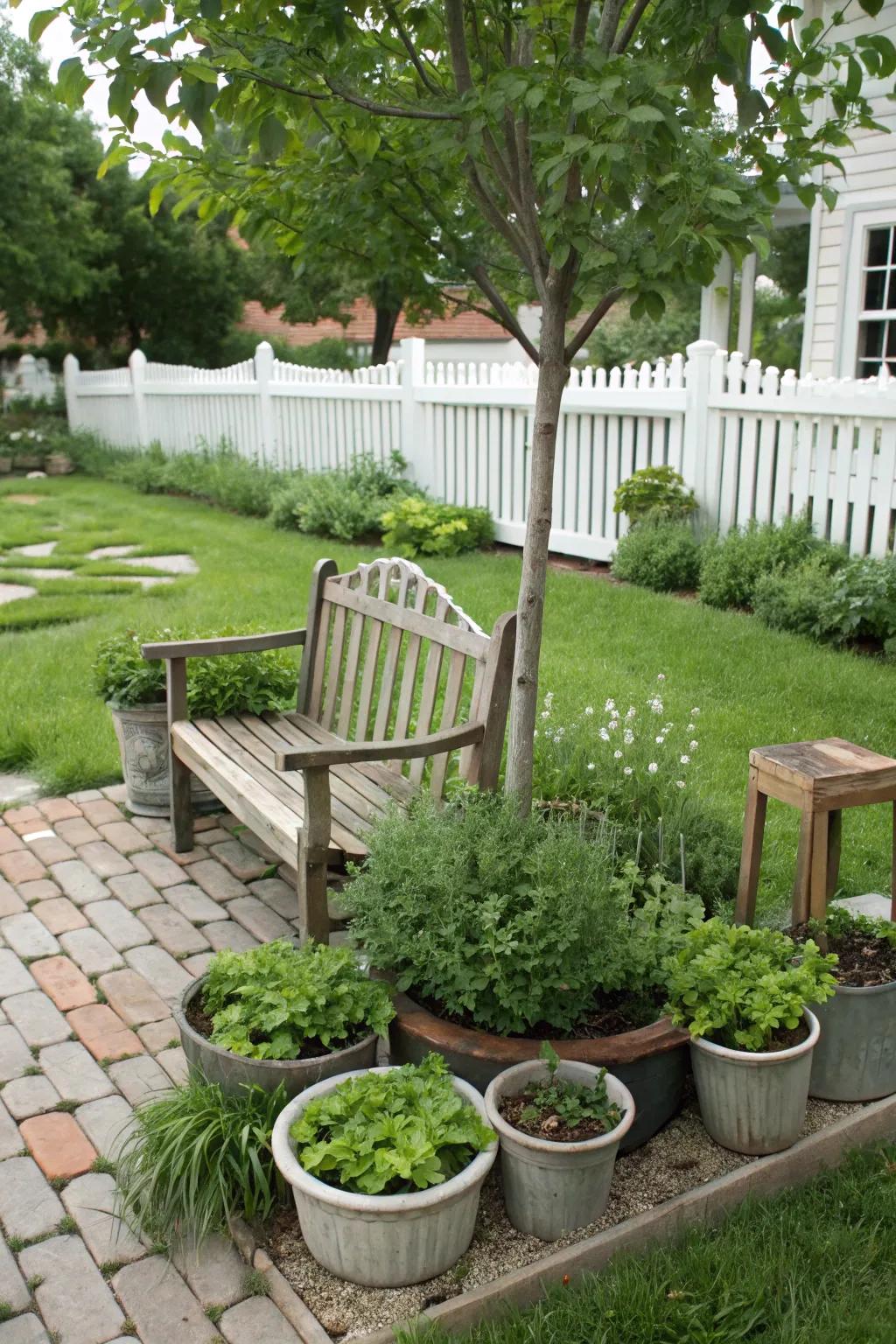
Integrating a seating area into your herb garden lets you enjoy the fruits of your labor. I find that a simple bench surrounded by aromatic herbs is the perfect spot for a morning coffee.
Check these products out:
- Rustic Wooden Garden Bench: Enhance your garden with a comfortable bench, perfect for enjoying peace among aromatic herbs.
- Outdoor Herb Planters: Complement your seating area with charming, durable planters filled with your favorite herbs.
- Decorative Garden Path Stones: Create inviting pathways leading to your seating area with elegant and durable path stones.
13. Herb and Flower Combos
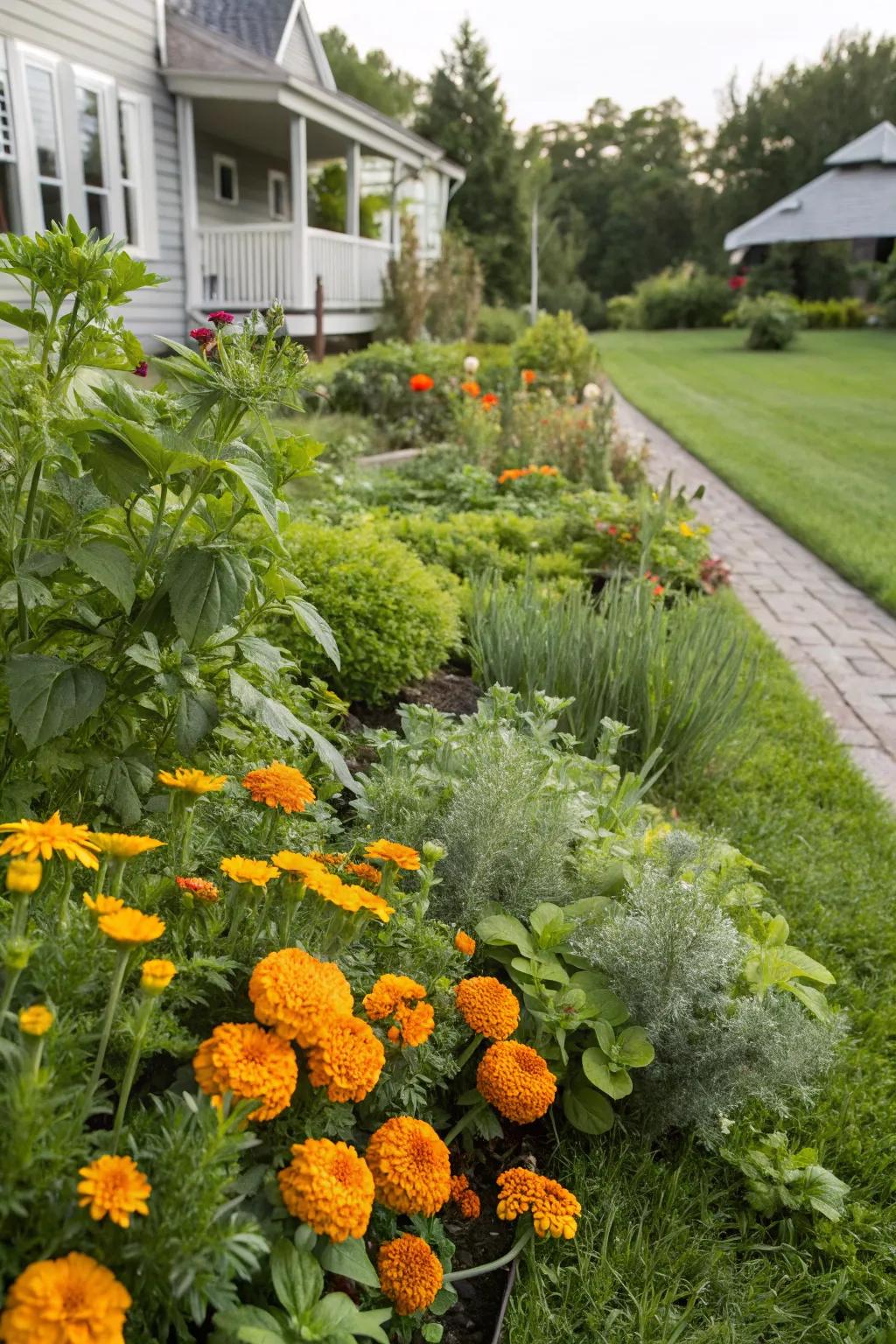
Combine herbs with flowers for a burst of color and fragrance. I find that pairing herbs like thyme with bright marigolds creates a stunning visual contrast that’s hard to resist.
These products might help:
- Thyme Seeds Pack: Grow aromatic thyme in your front yard for a delightful touch of green and flavor.
- Marigold Flower Seeds: Brighten your garden with vibrant marigolds, perfect for stunning visual contrast and pest control.
- Herb and Flower Garden Starter Kit: Kickstart your gardening journey with a comprehensive starter kit for herbs and flowers.
14. Charming Pathways
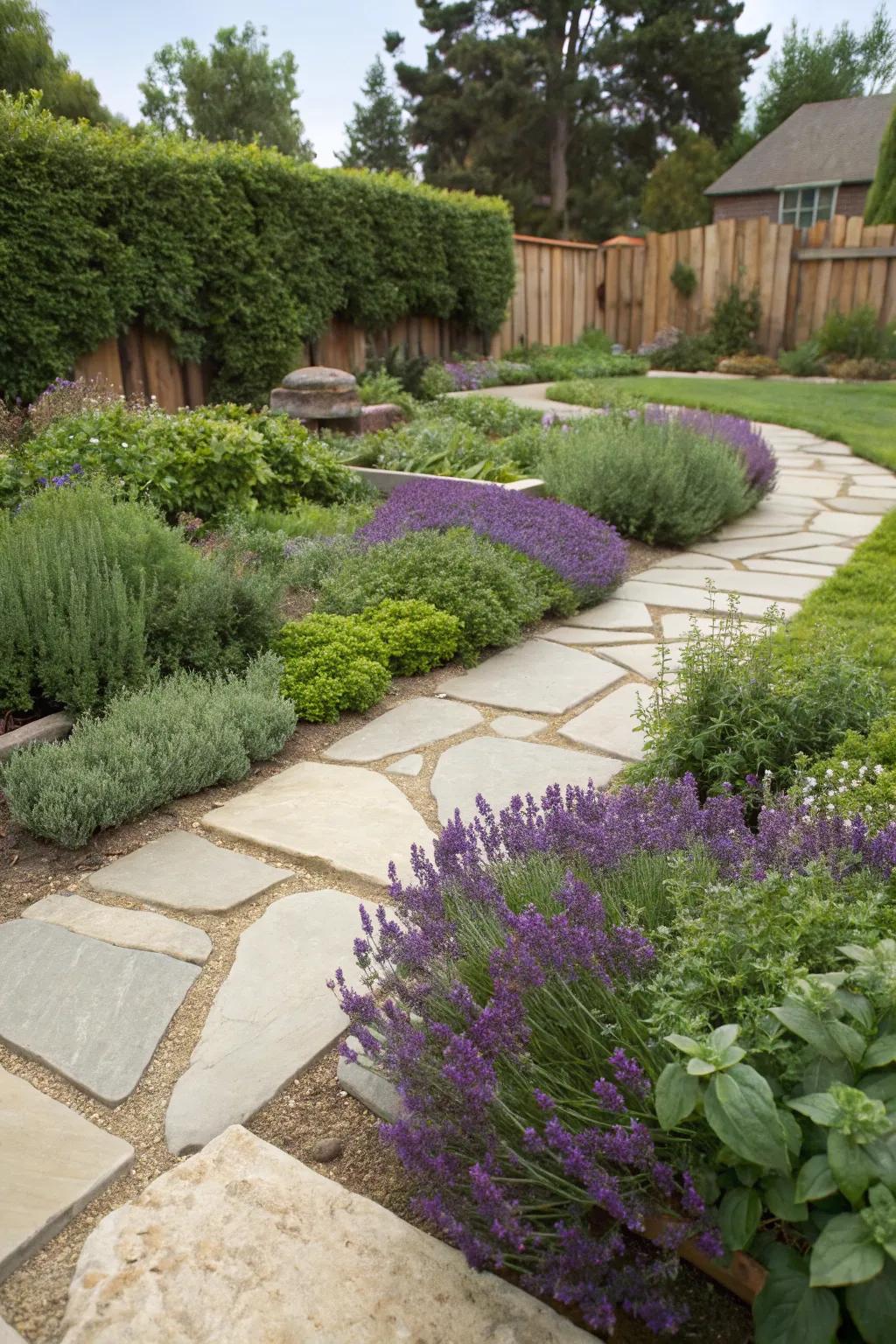
Creating pathways through your herb garden not only defines the space but also adds a touch of charm. I love using gravel or stepping stones; it makes the garden feel like a cozy retreat right in your front yard.
These products might be useful:
- Natural Stone Stepping Stones: Transform your garden into a serene escape with these natural stone stepping stones.
- Decorative Gravel for Landscaping: Enhance your garden pathways by spreading decorative gravel for a cozy, inviting look.
- Garden Pathway Edging: Define your garden paths beautifully using elegant garden pathway edging.
15. Window Box Herb Gardens

Window boxes filled with herbs bring a touch of greenery right up to your windows. I love how they add color and a fresh aroma to the front of my home.
A few relevant products:
- Wooden Window Planter Box: Enhance your windows with rustic charm using durable wooden planter boxes for lush herb growth.
- Herb Garden Starter Kit: Kickstart your herb garden with this comprehensive kit, ideal for fresh and aromatic herbs.
- Adjustable Window Box Brackets: Secure your window boxes with ease using sturdy and adjustable metal brackets for any window.
16. Pathway Herb Borders
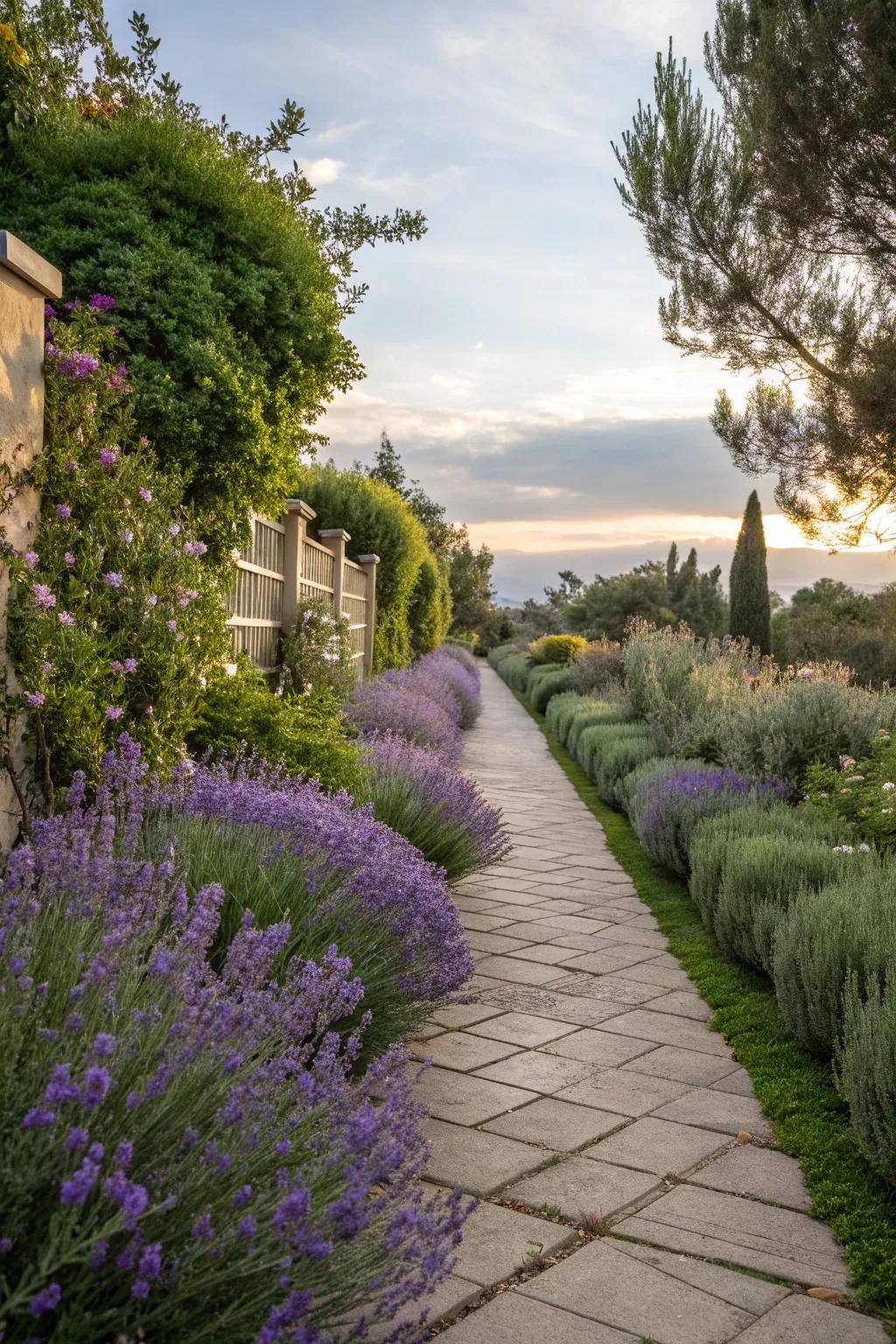
Line your pathways with herb borders for a fragrant welcome. I’ve used lavender and rosemary along my paths, and it’s such a delightful sensory experience.
A few things you might like:
- Lavender Plants: Add a calming scent to your pathway with vibrant lavender plants for a fragrant ambiance.
- Rosemary Seedlings: Enhance your garden’s appeal with hardy rosemary, perfect for aromatic pathway borders.
- Garden Edging Kit: Create a defined look for your herb borders with an easy-to-install garden edging kit.
